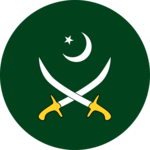| Eastern Command | |
|---|---|
 Insignia of GHQ Pakistan | |
| Active | 23 August 1969–16 December 1971 |
| Country | |
| Eastern Command Headquarters | Dacca Cantonment, East Pakistan, Pakistan (now Dhaka, Bangladesh) |
| Commanders | |
| Corps Commander | Lt. Gen. A. A. K. Niazi |
| Chief of Staff | Brig. Baqir Siddiqui |
| Notable commanders | Lt. Gen. Sahabzada Yaqub Khan VADM. Syed Mohammad Ahsan |
The Eastern Command of the Pakistan Army (initially designated as III Corps) was a corps-sized military formation headed by a lieutenant-general, who was designated the Commander Eastern Command. After the partition of India by United Kingdom, the Islamic Republic of Pakistan was divided into two territories separated by 1,000 miles (1,600 km) (prior to the independence of Bangladesh in 1971). Most of the assets of the Pakistan armed forces were stationed in West Pakistan; the role of the Pakistan armed forces in East Pakistan was to hold that part of the country until the Pakistani forces defeated India in the west (in case of war).[1] The Pakistan Army created the Eastern Command, with one commander in the rank of Lieutenant General responsible for the command. The armed forces (particularly the Pakistan Army), had drawn up a plan to defend Dhaka by concentrating all their forces along the Dhaka Bowl (the area surrounded by the rivers Jamuna, Padma and Meghna).[2]
After Pakistan launched Operation Searchlight and Operation Barisal to curb the Awami League-led political movement in March 1971 (leading to the creation of Mukti Bahini and insurgency throughout Bangladesh), Lieutenant General A. A. K. Niazi revised the existing plan according to the Pakistan Army's General Headquarters (GHQ) directive (which emphasized the need to prevent the Mukti Bahini from occupying any area of the province and to fight for every inch of territory).[3][4] HQ expected the Indians to occupy a large area of the province, transfer the Mukti Bahini and Bengali refugees there and recognize the Bangladesh government in exile – turning the insurgency into an international diplomatic issue.[5] Lieutenant General Niazi designated 10 cities (Jessore, Jhenaidah, Bogra, Rangpur, Jamalpur, Mymensingh, Sylhet, Comilla and Chittagong) on major communication hubs as "fortress towns" and placed the bulk of his troops near the Indian border.[6][7] The final plan called for the armed forces to delay Indian attacks at the border and then gradually fall back to the fortress towns.[8] From the fortresses, part of the surviving force was to take up positions near Dhaka and hold out until India was defeated in the west; Pakistani forces in the fortress towns would delay the bulk of the Indian forces and prevent them from concentrating on Dhaka.
- ^ Niazi 1998, p. 128
- ^ Ali 1992, pp. 118–119
- ^ Niazi 1998, pp. 131–132
- ^ Khan 1993, pp. 301, 307
- ^ Salik 1997, p. 123
- ^ Salik 1997, pp. 124–125
- ^ Jacob 1997, p. 73
- ^ Salik 1997, pp. 124–125